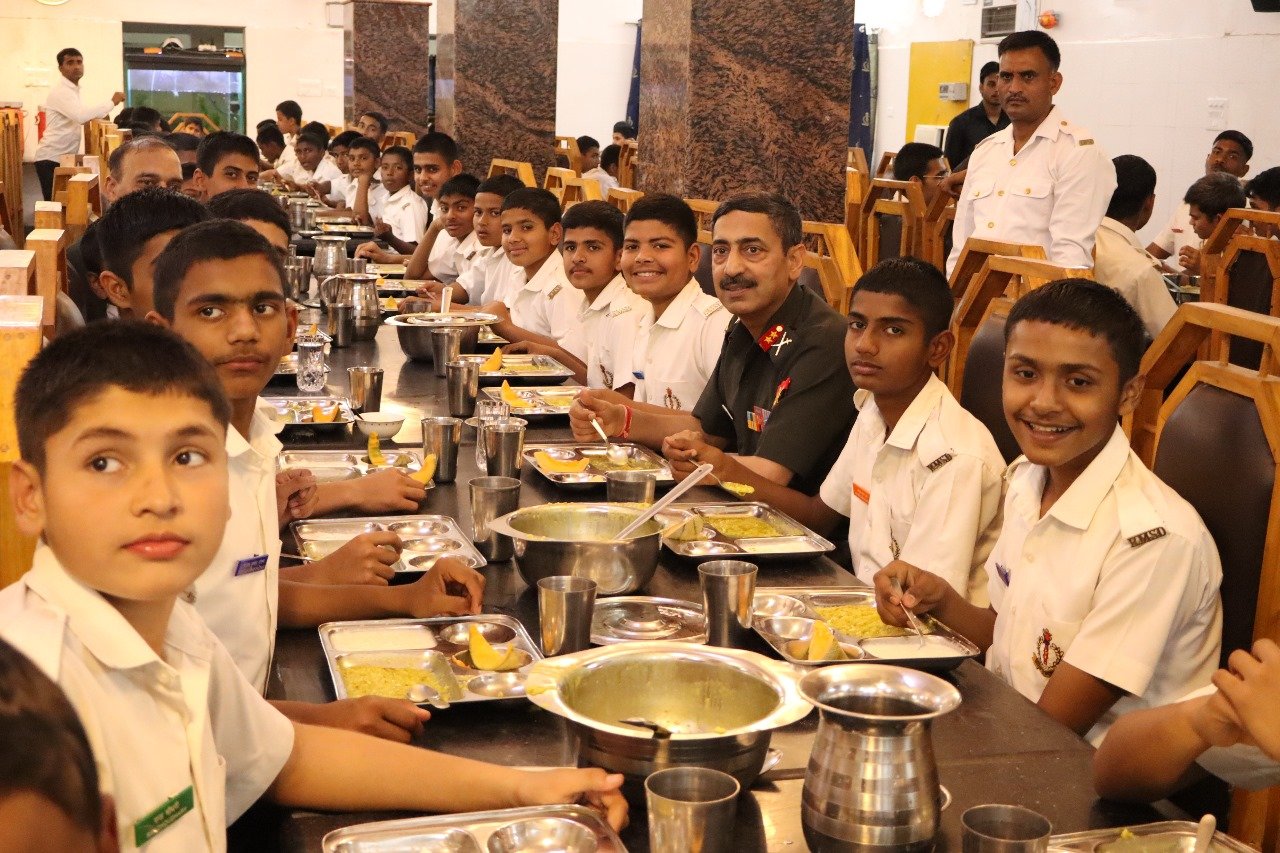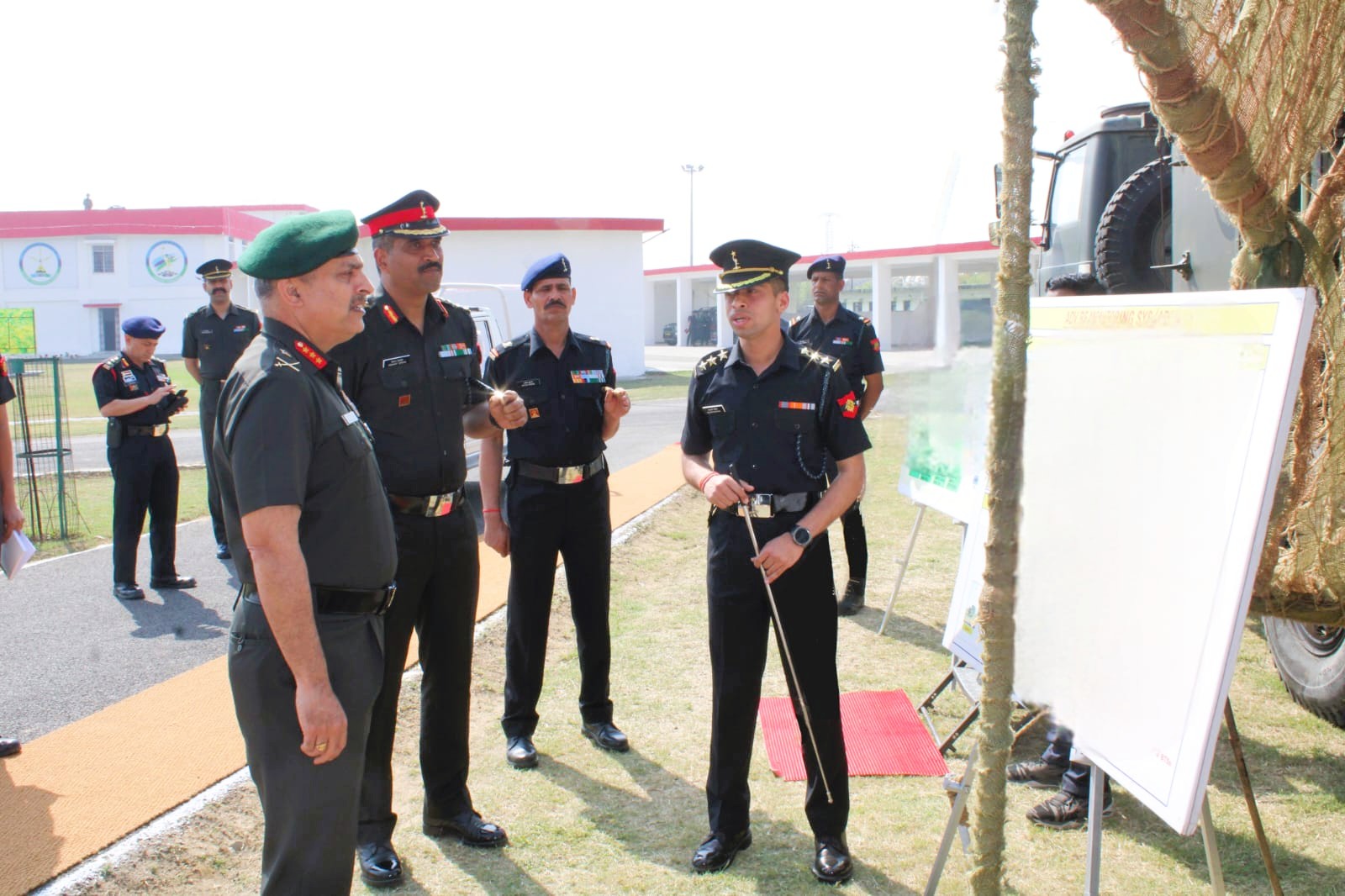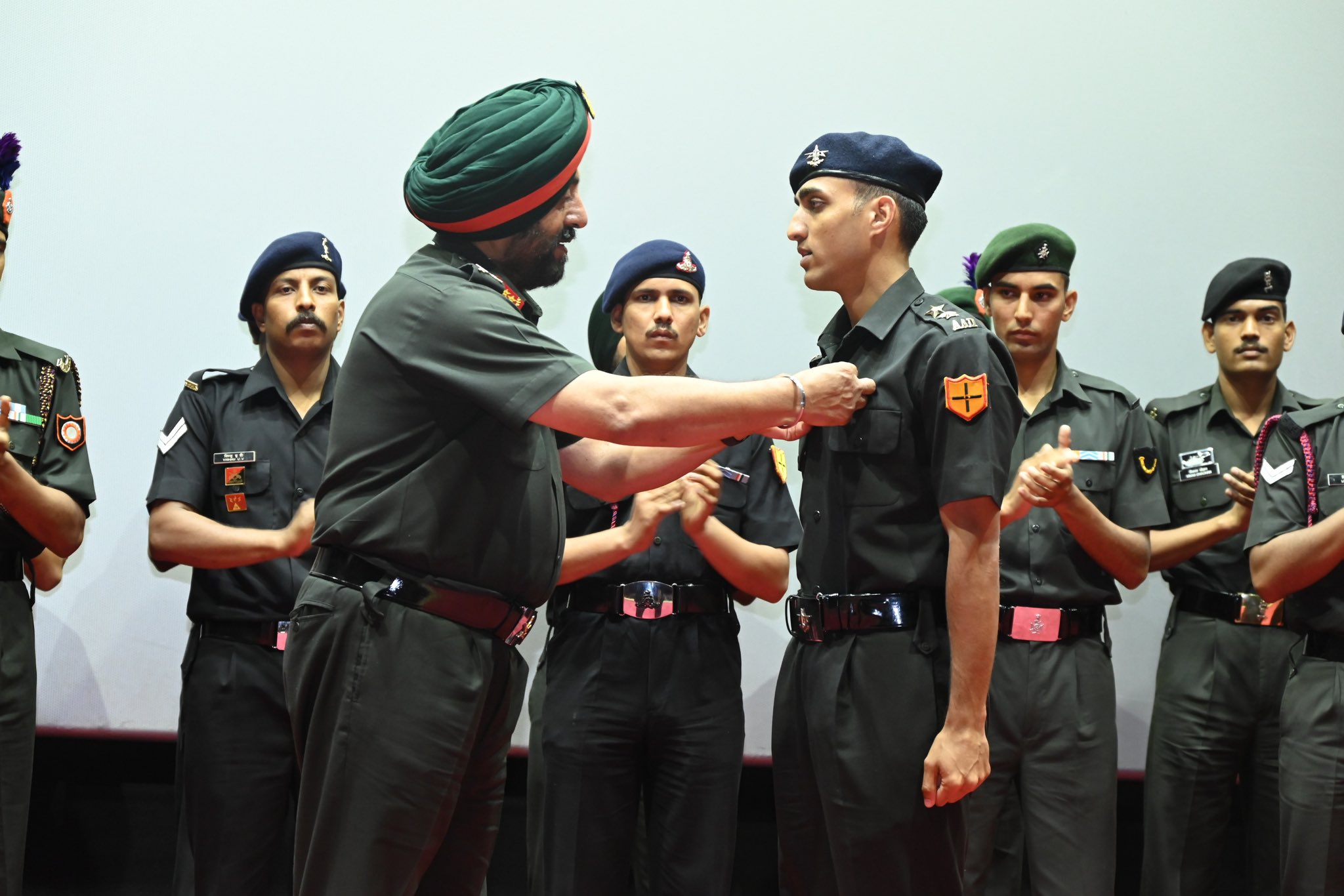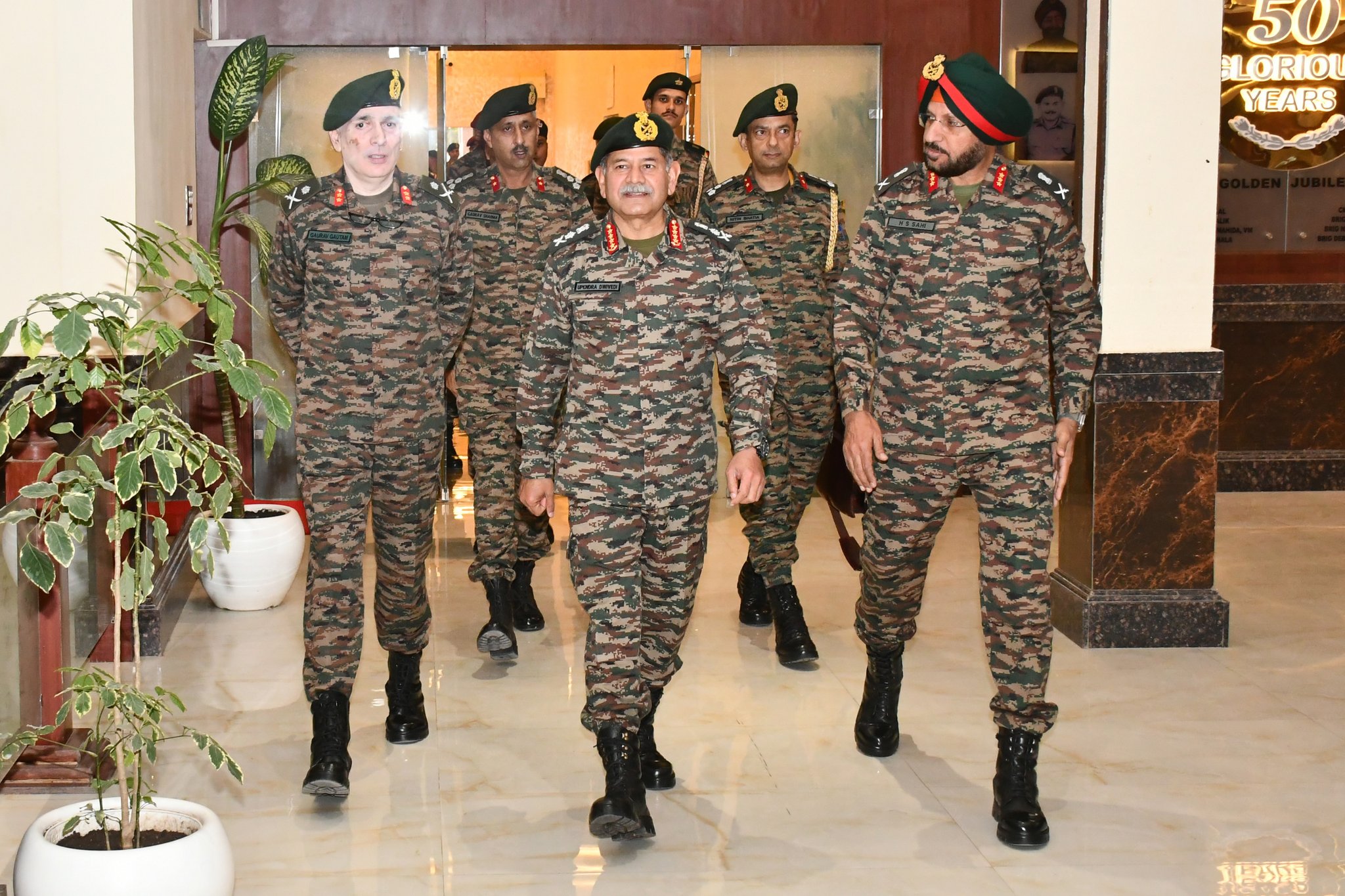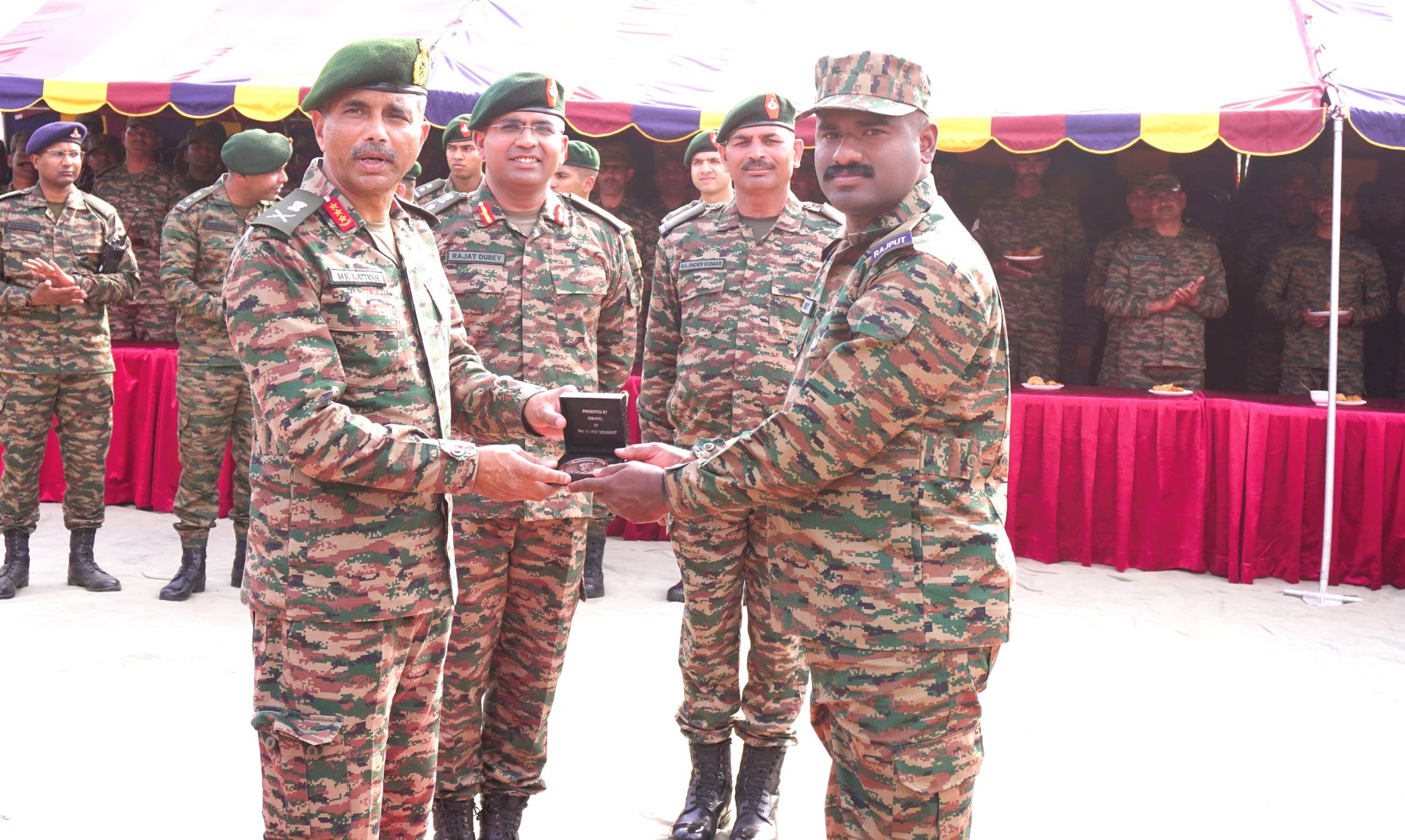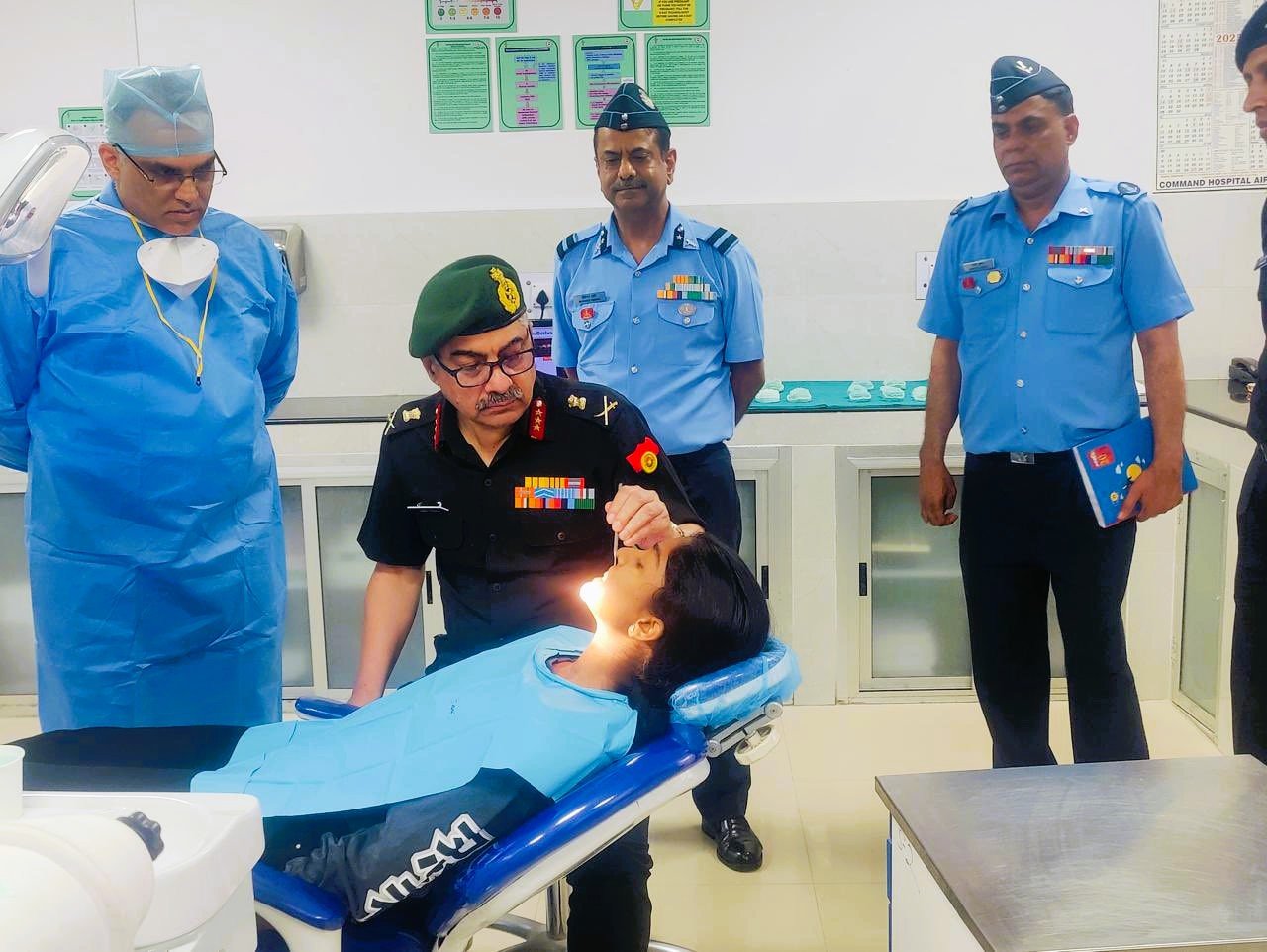Major General Rohit Mehrotra Visits Rashtriya Military School Dholpur
Major General Rohit Mehrotra, General Officer Commanding (GOC) 61 Sub Area, visited Rashtriya Military School (RMS) Dholpur, where he reviewed…
Lt Gen Mukesh Chadha Reviews 8 Electronic Warfare Battalion
Lieutenant General Mukesh Chadha, Chief of Staff (COS) of the Central Command, conducted a comprehensive visit to the 8 Electronic…
Sapta Shakti Adventure Team Wins Army Adventure Challenge Cup Trophy 2024–25
The Sapta Shakti Adventure Team has made history by winning the prestigious Army Adventure Challenge Cup Trophy for the year…
General Upendra Dwivedi Visits Army War College Mhow
General Upendra Dwivedi, the Chief of Army Staff (COAS), recently visited the Army War College (AWC) in Mhow, where he…
Lt Gen Manoj Kumar Katiyar Reviews Pine and Charging Ram Divisions
Lieutenant General Manoj Kumar Katiyar, PVSM, AVSM, General Officer Commanding-in-Chief of the Western Command, recently conducted comprehensive visits to the…
Lt Gen Vineet Sharma Visits Bengaluru’s Premier Military Dental Institutions
Lieutenant General Vineet Sharma, AVSM, VSM, Director General Dental Services (DGDS) and Colonel Commandant of the Army Dental Corps, conducted…

